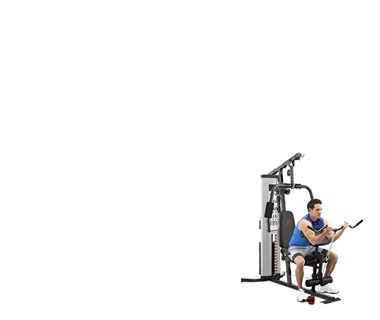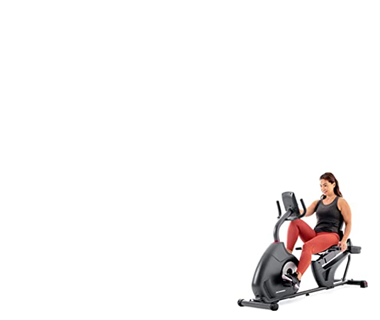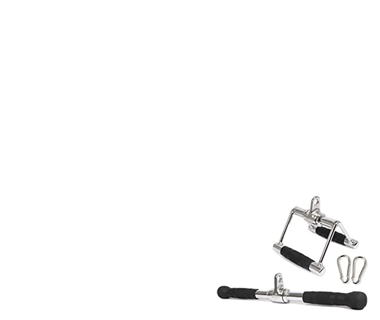It’s Time to Clear Any Misconceptions About Men’s and Women’s Training Leave a comment
In decades past, men often pursued muscle and strength in the hopes of building an ’80s action movie icon physique, while women’s training was marketed around Jane Fonda- and Kiana Tom-style aerobics, in which “weight training” normally consisted of lifting 3-pound pink dumbbells, and a nutrition plan loosely based on whatever popular diet Oprah was putting her endorsement behind.
These disparate origins have converged in recent years to where women have discarded skinny in favor of strength in greater numbers than ever before. Maybe it was Sigourney Weaver in Aliens, Linda Hamilton in Terminator 2, Serena and Venus Williams’ domination on the tennis court, or a little of all progressively seeping into the public consciousness that it wasn’t just OK to be strong but that it was awesome and better for women’s long-term health.
Whatever turned the tide, more women have discarded the “don’t get too bulky” pressure and narratives and decided that a little (or a lot) more “bulky” muscle was a great thing. In over 20 years in public gyms, I’ve noticed a huge change in the quality of training. But reflecting on this, guys are mostly doing the same old stuff. It’s the surge of women, both older and younger, taking up space in gyms. They know what they’re doing, and they’re hungry to learn how to train effectively.
And, if you haven’t yet taken notice, women are damn strong.
This begs the question: Do men and women need to train differently to get stronger and build muscle? The short answer is no. The long answer is also a nuanced no, but allows room for individual and group preferences.
There are differences between men and women in reproductive and hormonal systems. But outside of average proportions, we’re the same when it comes to all the stuff related to improving muscle, strength, and cardiovascular performance. We have the same muscles, tendons, bones, and cardiovascular infrastructure. The minor differences do not necessitate completely different methods of training.
4 PM production
What are the differences between women’s and men’s training?
On average there are some notable differences. The key here is “on average,” as there will be some women who are taller than some men. There will be some women who genetically start with more muscle than some men. But on average men are taller, have broader shoulders and bigger skeletal frame, have more muscle mass(especially upper body muscle mass), and larger hearts.
Men have more testosterone than women, but men and women can on average build the same amount of muscle relative to their starting musculature. It’s just important to remember women on average start with less overall muscle.
The science of muscular hypertrophy (gaining muscle), cardiovascular conditioning, and strengthening of bone and connective tissue is the same between men and women. Progressive overload through time, mechanical tension on muscles, and eating enough protein and calories to grow apply equally.
A recent meta analysis conducted by Martin Refalo, Dr. Andy Galpin, and others concluded that “resistance training promotes larger absolute increases in muscle size in males vs females, however, the relative increase in muscle size (percentage increase from baseline) following resistance training is similar between sexes.” Men have the potential to be larger by pure muscle mass, but both sexes on average can grow the same amount of muscle relative to their starting point.
Women do not need to lift lighter weights for higher reps, nor do they need to do less strength training and more cardio. Individuals will choose their preferred methods of physical activity, whether it be yoga, CrossFit, powerlifting, pickleball, rucking, or lifting weights in a commercial gym.
‘Superpowers’ women have when lifting
Women seem to be able to do more reps with weights just below their 1 rep max than men. Women seem to recover more quickly than men between sets, and this often means women enjoy and respond well to superset training, and this has been shown in some research. These differences may be explained in whole or in part by women on average lifting less absolute weight, meaning the training is less disruptive to their muscles and nervous system and by a slight tendency for women to have a greater percentage of type 1 muscle fibers, which have greater stamina to contract.
There are some other common differences worth being mindful of as we load and move. Men and women often have different angles between their upper and lower arm at the elbow (carrying angle) and between their upper and lower leg at the knee (Q angle). This can have minor effects on how we load and move as men tend to have straighter joint angles than women on average.
Women on average also tend to me more hyper-mobile at their joints. Anyone with hyper-mobility—or joint laxity as it’s sometimes called—will want to emphasize strength and control at hyper mobile joints as oppose to continue to blindly pursue more flexibility for the sake of. For example, a woman with hyper mobile knees wants be extremely careful of locking out her knees on a leg press.
Jacob Lund / Shutterstock
Are there preferences in how men and women prefer to train?
At the risk of dealing in stereotypes, men have traditionally enjoyed more chest, shoulder, arm, and overall upper-body training while women often gravitate toward lower-body training, especially with society’s surging popularity of having bigger glutes. Most of us tend to gravitate to things we are good at, which may at least partially explain these preferences.
Women are more and more excited about upper-body strength training and appreciate the appearance of more muscle and definition of their arms, shoulders, and backs. More women are realizing that images of excessively muscular women are not the product of three months of regular weight training but years of pharmaceutically enhanced hardcore bodybuilding. And with respect to a small minority of women who do find it easier to put on upper body muscle and prefer not to be too muscular, most realize that they want more muscle and years of dedicated training and nutrition isn’t getting them close to looking like bodybuilders.
Do women need to adjust their training for their menstrual cycle?
Another short answer of no. Traditionally a subject bereft of research, we’re now seeing a lot more attention to a huge cohort of women who enjoy working out and how their cycles affect their training. Lots of self-appointed gurus have suggested women should adjust the loading and intensity of their training during the different phases of their cycles. Research has failed to substantiate this.
The most important consideration with training and cycles, is women experience an incredible range of differences across their lives with menstrual health, especially when issues like endometriosis factor in. Research invariably deals with averages on a bell curve. This means many women are still outliers along a spectrum. Every women should approach her training and menstrual cycle with the individualized nuance it deserves. However, when you start, go in knowing that the default setting remains the same: Train hard and consistently.
Is it wrong to market different programs to men and women?
This is another “no” short answer that, like the others, requires nuance. If a coach is outright contradicting most of this article, and claiming that men and women are so fundamentally different that they “need” different training style, then they’re misleading you. But there are plenty of reasons why women may enjoy and prefer a program specific for women. It also doesn’t mean that this program is different from what will work for men.
Women may prefer classes or communities that are exclusively for women
Many commercial gyms have women’s only sections. This can be a great way for women to start out who feel intimidated by gyms, or don’t feel ready to go into the free weight section. Some cultures may even restrict women from going into co-ed spaces. Women can have many personal reasons not to want to be in the same space as men.
Some women prefer programs where the community is full of other women who share similar goals and experiences. Glute training programs are often marketed to and dominated by female participants.
Bojan Milinkov / Shutterstock
Some female coaches prefer to deal exclusively with female clients
Whether from personal preference themselves or because women often self select to female coaches, some female coaches work exclusively with female clients.
Nathalia Melo brands herself as “The go-to coach for busy and working moms.” The former Ms. Bikini Olympia left behind the competitive side of the industry to focus on serving over 5000 women with her no nonsense and sometimes tough love approach.
Eve Guzman had so much success as a nutrition coach that other women lined up to ask her to help them with their business, to where Eve created her Macro Mentorship community for women.
Jennifer Van Barneveld has built and guided Team Strong Girls Coaching and Strong Magazine as vehicles to help “transform moms into fitness models” and to help women feel strong and beautiful.
Can male coaches run female-only women’s training programs?
Many male coaches are popular with women. Jordan Syatt, Tony Gentilcore, and Aram Grigorian among many others are popular among female consumers while others brands bias heavily toward men. Nick Shaw, co-founder of Renaissance Periodization states that RP’s consumers are around 90 percent men, but they still have a small core of women coaches and clients who love RP’s evidence based strength and muscle building resources.
There are also several glute-branded coaches (of varied qualifications and quality) who attract legions of women followers and consumers. My own social media following is almost two thirds women and I began a women’s online group strength program over 2 years ago with a partner coach who’s career has flourished to where she’s stepped out on her own but do to the popularity of the program I’ve continued on. All while my in person and one on one training is closer to a 50/50 split.
Women’s training and workouts can be geared to their preferences and likes
If given the choice between a chest shoulder and arm building program and one that loads up on glute training, many women gravitate to the latter, evidenced by numerous glute centric women’s programs and utter lack of women’s pec development programs.
Coaches will create programs that appeal to more consumers. And while we still have 3-pound pink dumbbell batshittery selling “long lean muscles” sold by grifters, we again have lots of booty building programs that appeal to women. Women are also enjoying programs centred on getting their 1st or 15th pull-up and building whole body strength and muscle. Both Angela Gargano and Meghan Callaway have pull-up focused programs that attract men and women. This challenges the notion that women can’t do chin-ups. If you need more evidence go watch Meghan Callaway perform wild feats of calisthenics on her instagram or search for highlights of Angela Gargano’s 4 appearances on American Ninja Warrior.
There are now more women-centric training resources than ever
Girls Gone Strong is an industry leader on women’s centric training, pre and post-natal training, and women’s hormonal health education. Certified strength and conditioning coach and author Molly Galbraith is the figurehead and cofounder of GGS along with a collective of women who are at the forefront of advancing women’s fitness education.
Briana Battles is a certified strength and conditioning coach with a Master’s Degree in Coaching and Athletic Administration who’s built programs and an educational platform around pregnancy and postpartum athleticism.
Dr. Alyssa Olenick is a successful fitness business owner and academic who’s part of a growing cadre of highly educated women in strength and conditioning who are changing narratives and working with growing bodies of research on women and training, a domain long biased toward men.
Susan Niebergall is one of a small but growing group of older adult women with large followings, who showcase that you can be strong and muscular at any age. Susan shows off her incredible upper body strength with reps of weighted chin-ups in her early 60’s and shares tons of no nonsense practical fitness advice.
4 PM production / Shutterstock
Women need strength and cardiovascular training
Women are at greater risk of osteoporosis (4 times the rate of men in the US) and Alzheimers disease(double that of men). Strength and cardiovascular training have potent powers to reduce the risk or progression of cardiovascular disease, sarcopenia(age related muscle loss), Alzheimers, other neurodegenerative diseases, and diabetes.
Though research is more limited on cancer, there is some evidence that weight training reduces the risk of colon and possibly kidney cancer, and having more muscle has a substantial impact on cancer treatment survival. Cancer treatments are brutal, and having great muscle reserves plays a big role in surviving muscle wasting (called cachexia) during treatment. Having more muscle in reserve is potentially life saving. Similarly having neuromuscular movement reserve plays a big role in slowing the progression of neurodegenerative disease, especially Parkinson’s disease.
Maintaining muscle mass, bone mineral density, mobility, and strength, are all important in reducing the risk of serious fall injuries, which kill thousands of people each year, leave thousands more with hip or femur fractures that demolish freedom and often precede rapid decline of mental health and quality of life. Women account for 75% of hip fractures and fall more often.
Maintaining cardiovascular capacity and Vo2 max has a significant relationship with not only longevity but your quality of life as you get older. Getting strong and building your cardiovascular health is the best tool you possess to continue to live life on your terms as you get older. Research has also shown that women may need less volume of moderate to vigorous cardiovascular training to get the same survival benefit than men, by half. Another superpower.
Starting to lift, get strong, build muscle, and build cardiovascular stamina can be life saving.
Strength, muscle building, and cardiovascular training are the domain of everyone who chooses to participate, and outside of individual preferences requires no meaningful difference in training methods. Choose methods and coaches that help keep you consistent. Enjoying your training means you’re more likely to stay consistent and get better results.




